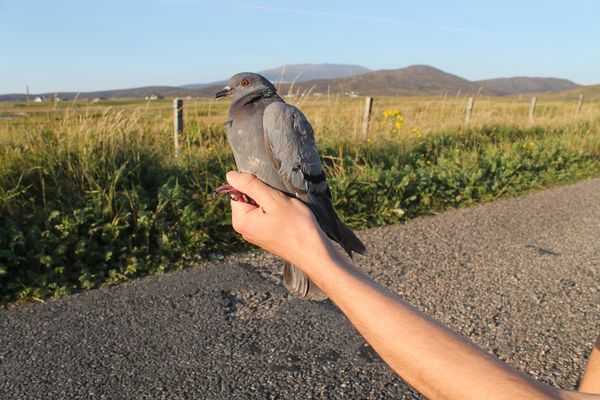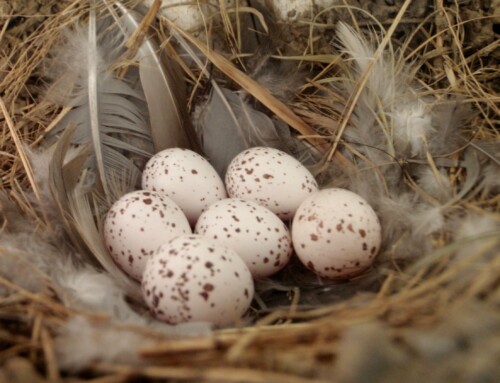 LINKED PAPER
LINKED PAPER
The wild ancestors of domestic animals as a neglected and threatened component of biodiversity
Smith, W.J., Quilodrán, C.S., Jezierski, M.T., Sendell‐Price, A.T., Clegg, S.M. 2021 Conservation Biology. doi: 10.1111/cobi.13867 VIEW
Domesticated animals have been massively important throughout human history. It’s hard to overstate their significance in our collective culture. Today, they make up most of the animal biomass on the planet. Because of their familiarity, domestic animals have received lots of research interest. Depending on the species, the list of papers in which they have starring roles can easily run into the hundreds. From dogs, salmon and sheep to cattle, chickens, and honeybees, we’ve built up quite the body of knowledge (although, of course, there’s always more to learn!). Despite this, their wild forms, representing the ancestral lineages from which they were originally domesticated, are often overlooked. In fact, gene flow from domestic or feral (self-sustaining populations resulting from escaped domestic animals) entities can make it unclear whether undomesticated populations persist in any reasonable approximation of their ‘wild’ state. This lack of knowledge contrasts with the situation in the plant sciences, where botanists have long acknowledged the value of wild relatives in crop breeding. In our essay, published in Conservation Biology, we discuss these wild forms and focus on two important topics. Firstly, we outline the importance of conserving these animals. Secondly, we highlight some of the conservation problems that are particularly relevant to them. Here, I focus on some avian examples to outline some of these issues.

Figure 1 A world map showing some of the wild forms of domestic animals. These animals are globally distributed, and include those with extant populations such as the (a) Vicuña (Vicugna vicugna), (b) Atlantic Salmon (Salmo salar), (c) Rock Dove (Columba livia) (d) Wildcat (Felis silvestris), (e) African Wild Ass (Equus africanus) (f) Red Junglefowl (Gallus gallus), (g) Gaur (Bos gaurus) and (h) Banteng (Bos javanicus). Some, such as (i) Aurochs (Bos primigenius) and (j) Tarpan (Equus ferus ferus), are globally extinct. There are also populations originating from ancient feral domestic animals, such as the (k) European Mouflon (Ovis aries), (l) Dingo (Canis familiaris) and (m) New Guinea Singing Dog (Canis familiaris). The undomesticated or ancient feral status of (n) Przewalski’s Horse (Equus ferus przewalski) is debated. Photographs are credited to the following people (in order): Thomas Quine, CC BY 2.0; Greg Thompson/USFWS, Public domain; Mike Pennington, CC BY-SA 2.0; Peter Trimming, CC BY 2.0; Greg Goebel, CC BY 2.0; Francesco Veronesi, CC BY-SA 2.0; Mahbob Yusof, CC BY 2.0; Rochmad Setyadi, CC BY-SA 2.0; Charles Hamilton Smith, Public domain; Public domain; Andrea Schieber, CC BY-NC-ND 2.0; Jarrod Amoore, CC BY 2.0; Patti McNeal, CC BY 2.0 and Lawrence Schaefer, CC BY 2.0.
Importance of the wild forms of domestic animals
With limited funding available for conservation, determining which species and populations to conserve is an important debate. We argue that there are three main reasons why the undomesticated forms of domestic animals are deserving of further research and protection. Firstly, as previously mentioned, many domestic animals are model systems. For example, the domestic pigeon Columba livia is used in laboratories to study, among other things, genetics, navigation, and cognition. Contrastingly, there is a relative lack of knowledge regarding the natural history and basic biology of the wild Rock Dove (also Columba livia). How are we to fully understand the biology of the domestic entity without studying its wild form in a ‘natural’ ecosystem? Studies of Rock Dove movement ecology could enhance our understanding of the species’ need for enhanced navigation ability.
The second reason why the wild ancestors of domestic animals are important to maintain relates to their utility as a source of genetic diversity. This is especially important with respect to animals bred for food, and a good avian example would be the chicken (Gallus gallus). Selective breeding to maximise nutritional (and economic) output can render domestic animals inbred and lacking genomic diversity. The Red Junglefowl (Gallus gallus), the chicken’s primary wild ancestor, exists over a wide geographic area and so provides, in theory, a useful source of genetic diversity that could be useful in a world where livestock disease is becoming an increasingly worrying problem.

Figure 2 A Red Junglefowl (Gallus gallus), the primary ancestor of the domestic chicken. © Francesco Veronesi CC BY-SA 2.0 Wikimedia Commons.
Finally, if we lose wild ancestors, or see them replaced with their domestic forms, we could be losing important ecological functions. We haven’t completely lost one of the wild forms of domestic birds yet (although, as we’ll see below, hybridisation makes this a complicated topic!) – but the extinct Aurochs (Bos primigenius) and Tarpan (Equus ferus) of Europe have, in many situations, been replaced by domestic proxies. It’s quite difficult to judge whether domestic cattle (Bos taurus) or ponies (Equus ferus) really do provide adequate ecological proxies for their primeval ancestors. Domestic forms provide a useful ‘best possible replacement’, but it is surely sensible to prevent it getting to this stage if we can.
Conservation issues relating to the wild forms of domestic animals
The primary issue relating to the conservation of these wild animals has already been alluded to. It’s hard for us to know the extent to which they ‘exist’. Most domestic animals have large and geographically widespread feral populations. Feral domestic pigeons can be found in pretty much every urban area on Earth. Such feral animals readily hybridise with their wild forms, and continual introgression (backcrossing leading to gene flow) often leads to the genetic replacement of the latter. Wild Rock Doves used to be present throughout Europe, including on the coasts of England and Wales. They now persist only in certain regions, such as parts of the Celtic fringe of the British Isles, where feral pigeons have not yet arrived in numbers. Even in such places, it seems unlikely that Rock Dove populations are free of feral genetic input, rendering their long-term future in doubt. Red Junglefowl are similarly threatened by interbreeding with domestic chickens, and it’s clear that there has been extensive gene flow between domestic ducks (Anas platyrhynchos) and geese (Anser anser) and their respective wild relatives as well. Conservation efforts aiming to protect the undomesticated forms of domestic animals must start with analyses of both genomes and phenotypes to identify the level of introgression that has occurred in different populations.

Figure 3 A wild Rock Dove (Columba livia) caught for ringing and DNA sampling in the Outer Hebrides. Learning about the population genetics, survival rates and movement ecology of such wild populations will help us to understand the evolution and basic biology of the domestic pigeon © Will Smith.
We hope that our paper will draw attention to this unique group of organisms, and perhaps help to give people a better understanding of how our most familiar animal companions were in a time before humans came to shape the world around them. As well as being of potential utility for scientific and practical reasons, they are a fascinating set of animals worthy of appreciation in their own right.
References
Heikkinen, M. E., Ruokonen, M., White, T. A., Alexander, M. M., Gündüz, İ., Dobney, K. M., Aspi, J., Searle, J. B., & Pyhäjärvi, T. 2020. Long-Term Reciprocal Gene Flow in Wild and Domestic Geese Reveals Complex Domestication History. G3 Genes|Genomes|Genetics 10: 3061-3070. VIEW
Johnston, R. F. 1992. Evolution in the Rock Dove: Skeletal Morphology. The Auk 109: 530-542. VIEW
Quilodrán, C. S., Nussberger, B., Montoya-Burgos, J. I., & Currat, M. 2019. Hybridization and introgression during density-dependent range expansion: European wildcats as a case study. Evolution 73: 750-761. VIEW
Redford, K. & Dudley, N. 2018. Why should we save the wild relatives of domesticated animals? Oryx 52: 397-398. VIEW
Taberlet, P., Valentini, A., Rezaei, H. R., Naderi, S., Pompanon, F., Negrini, R., & Ajmone- Marsan, P. 2008. Are cattle, sheep, and goats endangered species? Molecular Ecology 17: 275-284. VIEW
Thakur, M., Fernandes, M., Sathyakumar, S., Singh, S. K., Vijh, R. K., Han, J., Wu, D.-D., & Zhang, Y.-P. 2018. Understanding the cryptic introgression and mixed ancestry of Red Junglefowl in India. PLoS ONE 13: e0204351-e0204351. VIEW
If you want to write about your research in #theBOUblog, then please see here.



